Bücher
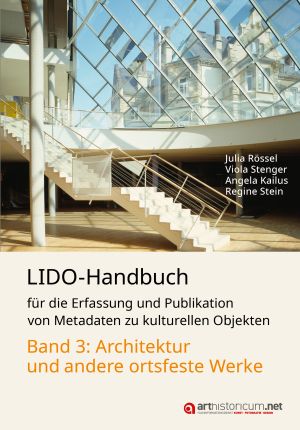
LIDO-Handbuch für die Erfassung und Publikation von Metadaten zu kulturellen Objekten
Band 3 des LIDO-Handbuchs hat den Schwerpunkt Architektur und andere ortsfeste Werke. Um Daten aus verschiedenen Fachinformationssystemen auf institutionenübergreifenden Plattformen wie der Deutschen Digitalen Bibliothek zusammenführen zu können, müssen gemeinsame Standards für Dateninhalt und Datenstruktur verwendet werden. Das vorliegende Handbuch ist ein Anwendungsprofil des Metadatenstandards LIDO, das alle relevanten Datenfelder für die Beschreibung von ortsfesten Werken, z. B. der Architektur, enthält. Es erläutert jedes Datenfeld, und enthält Tipps für die Erfassung, inhaltliche Beispiele sowie Hinweise für den Datenexport in das LIDO-XML-Format. Sämtliche Empfehlungen zielen darauf ab, Daten aus unterschiedlichen Quellen so aufzubereiten, dass möglichst umfassende und präzise Suchergebnisse erzielt werden können und Wege zur weiteren Informationsvernetzung eröffnet werden.

Das Frontispiz in der Kunstliteratur
Frontispize wurden in der Kunstliteratur der Frühen Neuzeit vor allem eingesetzt, um die Profession der Künstlerautoren und das Buch als Träger von Wissen über Kunst visuell zu inszenieren. Durch das Zusammenwirken von Personifikationen wurden kunsttheoretische, -didaktische und moralische Überlegungen dargestellt. Die Motive partizipieren an zeitgenössischen Bilddiskursen. Im Laufe des 16. Jahrhunderts entwickelte sich dafür eine Bildsprache mit paneuropäischem Wirkungskreis, die bis ins 18. Jahrhundert ihre Gültigkeit behielt. Diese Studie untersucht Topoi, die die Titelillustration der Kunstliteratur in der Frühen Neuzeit prägten. Erstmals erfolgt eine umfassende Schau des Bildmaterials.

The EU's European Capital of Culture format between local and international cultural policies
Die „Kulturhauptstadt Europas“ gilt als kulturpolitische Flagship-Initiative der Europäischen Union. Insgesamt acht deutsche Städte hatten sich in einem Auswahlverfahren um diesen Titel für das Jahr 2025 beworben, welcher schließlich Chemnitz zugesprochen wurde. Kulturelle und kulturpolitische Veranstaltungen und zum Beispiel öffentliche Diskussionen in den Städten gingen der Abgabe der Bewerbungsbücher voraus. Der Beitrag gibt einen Einblick in das Auswahlverfahren, die städtischen Bewerbungsaktivitäten und die lokalen stadt-, kultur- und europapolitischen Debatten. Er zeigt auf, wie verschiedene Lesarten des EU-Formats ineinandergreifen und dessen Erfolg begünstigen.
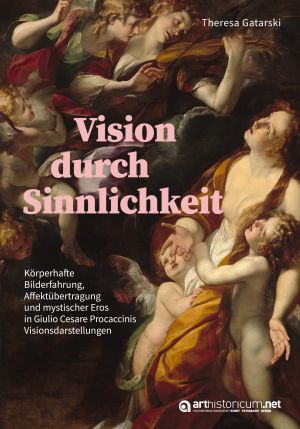
Vision durch Sinnlichkeit
Durch ihre Sinnlichkeit sprengen die Visionsgemälde von Giulio Cesare Procaccini (1574–1625) die etablierten Darstellungskonventionen seiner Zeit. Die Studie beleuchtet Procaccinis sinnliche Bildsprache vor dem Hintergrund einer medienübergreifenden Erotisierung mystischer Spiritualität zu Beginn des 17. Jahrhunderts und leistet auf diese Weise einen Beitrag zur Erforschung der figurativen Herausforderung der Darstellung des Übernatürlichen in der italienischen Malerei um 1600.
Anhand prägnanter Beispiele wird erstmals aufgezeigt, welche Wirkungsabsicht Procaccini mit seinem spezifischen visionären Darstellungsmodus verfolgt. Hierfür werden exemplarische Visionsgemälde in bestehende Diskurse zu Fragen der Wirkungsästhetik und Sinnlichkeit in der posttridentinischen Kunstproduktion eingebettet. Kontextkonditionen wie Raumerfahrung, Blicklenkung und Rezeptionsvorgaben sowie Fragen der Ortsgebundenheit und der liturgischen Einbindung werden ebenso in die Interpretation miteinbezogen wie zeitgenössische Quellen aus der theologischen und mystischen Literatur der Zeit.

Arte flotante
Kunstgeschichten der Gegenwart, Band 17
1956 umrundet die erste schwimmende Ausstellung argentinischer Kunst die Welt. Die Wanderausstellung auf einem Schiff ist zugleich die erste Aktivität des in Buenos Aires neu gegründeten Museums für Moderne Kunst. Diese Publikation beleuchtet die argentinische Präsenz in der globalen Kunstwelt der Nachkriegszeit und diskutiert die Faktoren hinter der Realisierung dieses mobilen Ausstellungsformats. Auf der Grundlage von bis anhin unveröffentlichtem Archivmaterial wird gezeigt, dass das Meer von jenen Akteur*innen als Ausstellungsort genutzt wird, die kaum in den Kanon der Kunstgeschichte der Moderne eingegangen sind. Damit leistet Arte flotante einen Beitrag zur globalen Kunst- und Ausstellungsgeschichte.
Gefördert durch den SNF (Schweizerischer Nationalfonds)

Albrecht Dürers Traumgesicht von 1525
Das Traumgesicht gilt als eines der bedeutendsten Bilder Albrecht Dürers. Zu Papier gebracht im Jahr 1525, in einer Zeit gewaltigster Panik vor dem Weltuntergang, wird Dürers Aquarell einer Sintflut gemeinhin als Niederschlag einer unmittelbar persönlichen Vision des Künstlers interpretiert. Das vorliegende Buch schlägt eine konträre Deutung vor. Unter Bezugnahme auf andere Werke der Reformationszeit wie Michael Ostendorfers berühmten Holzschnitt der Wallfahrt zur ‚Schönen Maria‛ von Regensburg wird das Traumgesicht als ein höchst konstruiertes, ambigues Bild und als nichts Geringeres als eine Summe von Dürers Kunsttheorie verstanden.

Under Shelling: Art Historical Revisions in the Light of the War in Ukraine

Zukunft?!
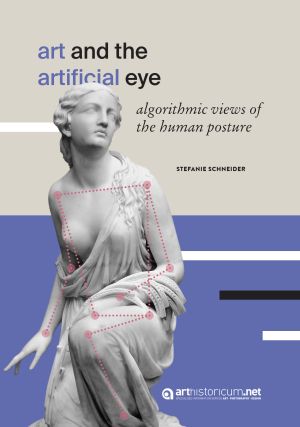
Art and the Artificial Eye
Gerade in der Kunstgeschichte ist die menschliche Gestalt nahezu allgegenwärtig, nicht nur als Darstellungsobjekt, sondern auch als Bedeutungsträger – zusammen mit den Körperhaltungen, die von ihr ausgehen. Dennoch hat der kunsthistorische Diskurs die Körperhaltung als eigenständigen Untersuchungsgegenstand weitgehend vernachlässigt. Dieses Desiderat zu schließen, hat sich das Buch zum Ziel gesetzt: Durch die Nutzung des ‚künstlichen Auges‘ informatischer Methoden wird versucht, einen virtuellen Möglichkeitsraum – von Assoziationen, Bezügen und Ähnlichkeiten – für die historische Einbettung der menschlichen Figur, und ihrer Körperhaltung, in der bildenden Kunst zu konstruieren.

Beruf, Blick und Bild
Frauen kommen in der tradierten Fotografiegeschichte selten vor. Ihre Spuren verlieren sich in der Rezeptionsgeschichte, sie werden quasi ‚ausgeblendet‘ oder bekommen den Status einer Ausnahme zugewiesen. Anhand von Biografien rekonstruiert die Autorin die Entwicklung des Berufs der Fotografin. Beleuchtet werden auch die sozialen, bildungspolitischen und medientechnischen Bedingungen, die Frauen ab Ende des 19. Jahrhunderts vorfanden. Das junge und offene Berufsfeld Fotografie ermöglichte solide ausgebildeten Frauen schöpferisches Arbeiten und ökonomische Unabhängigkeit. Nathalie Dimic leistet mit der Studie Pionierarbeit, indem sie die Sozialfigur der Fotografin erstmals inter- und multidisziplinär konturiert.
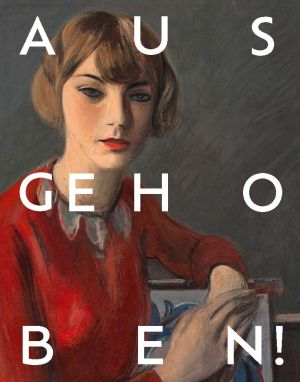
Ausgehoben!
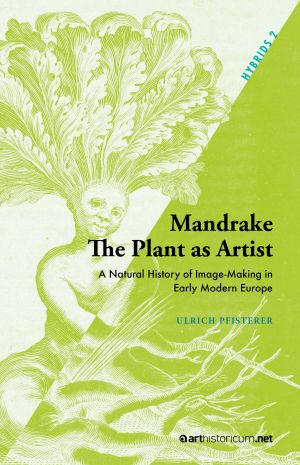
Mandrake - The Plant as Artist
Plants produce images, nature is an artist. What reads like an avowal of contemporary eco-art was already a subject of intense interest in early modern times: after all, there are many forms in nature that are reminiscent of a human figure - such as the mandragora or mandrake root. Explanations ranged from superstition and speculation about divine messages hidden in creation to scientific theories. At the same time, the relationship between natural and artificial products and the conditions for precise observation were also considered. One highlight of these discussions was the publication of an anthropomorphic beetroot in 1670 in Germany's first scientific journal.
German version: https://doi.org/10.11588/arthistoricum.1369

Le chevet de l’église romane
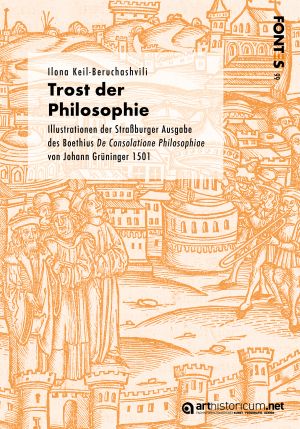
Trost der Philosophie

Die Kunststadt Darmstadt 1933–1945
Die Suche nach NS-Raubgut in Sammlungsbeständen ist eine bedeutsame und herausfordernde Aufgabe aller kulturgutbewahrenden Institutionen. In Darmstadt wird seit mehreren Jahren an verschiedenen Häusern Provenienzforschung betrieben: Herkunft und Geschichte von Sammlungsobjekten werden systematisch erforscht und dokumentiert. Über die Klärung der Objektbiografien und der Erwerbungskontexte hinaus, erweitern diese Recherchen auch die Kenntnisse zur jeweiligen Sammlungs- und Institutionsgeschichte. Die Beiträge der Expert*innen verschiedener Disziplinen auf dem Gebiet der Provenienz- und Sammlungsforschung bieten erstmals einen Überblick über Strukturen und Netzwerke einiger bedeutender kommunaler, staatlicher Darmstädter und Mainzer Kulturinstitutionen in der Zeit des Nationalsozialismus.
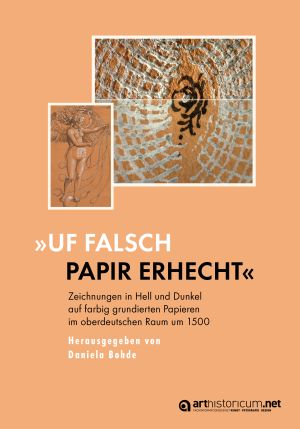
„Uf falsch papir erhecht“

NEO Collections
Im Projekt NEO Collections haben sich drei Museen, das Museum für Kunst und Gewerbe Hamburg (MK&G), das Übersee-Museum Bremen und das Nationalmuseum Stockholm, auf den Weg gemacht, den Zugang zu ihren Sammlungen neu zu denken und dabei neue Formen des Arbeitens erprobt - untereinander, in den Museen und mit externen Communities.
Die Publikation stellt die unterschiedlichen Formate und ihre Umsetzung im MK&G dar.

Instant Public Art

Diving into artworks interpretations through the lenses of semantic data: an application on Panofsky’s iconological studies

Hello Nature

1874-2024. 150 Jahre Stadtmuseum

Intérieur Numérique

elektrisierend!

EVA Band 28

Anatolian Rugs from Bistritz/Bistriţa
folgt

Rhythms and Resonances. Sounding Objects in the Middle Ages
folgt

Signum and Simulacrum – The Marble in 18th Century and Photography

Pflanzen – Tiere – Menschen im Dazwischen
Der Band versammelt die Beiträge der Konferenz „Pflanzen – Tiere – Menschen: Präparieren, Konservieren, Ausstellen. ‚Doing Objects‘ in historischer und aktueller Perspektive“, die im Oktober 2024 an der Georg-August-Universität Göttingen veranstaltet wurde. Die als Kooperation des Lehrstuhls für Mittlere und Neuere Geschichte der Georg-August-Universität Göttingen und des Netzwerks Provenienzforschung in Niedersachsen durchgeführte Konferenz wurde durch Mittel des Programms „zukunft.niedersachsen“ gefördert. Ziel war es, Akteur:innen mit unterschiedlichen Perspektiven, darunter Kultur- und Naturwissenschaftler:innen, Präparator:innen und Restaurator:innen, zu versammeln, um Debatten zum Umgang mit Präparationen und Modellen auf Basis menschlicher, tierischer und pflanzlicher Materialität zu diskutieren. Zudem wurden bislang kaum beachtete, thematische Überschneidungen hinsichtlich konservatorischer Praktiken wie dem „Doing Objects“ in historischer und aktueller Perspektive ausgelotet.

The Paris World Fairs – (Re-)Productions of Art and Fashion
folgt

Les Plafonds peints en France et en Allemagne

Albrecht Altdorfer

Dionysos des lumières – Aux sources de la modernité artistique
Folgt!

Matrice et Signum – La Croix dans la Culture Médiévale occidentale Histoire de l'Art et Anthropologie
folgt

The Académie Royale Art Collection

Le mythe Le Brun, entre attaqueset critiques

Le fragment en archipel
Das Fragment ist mit seiner widersprüchlichen Wahrheit ein Überbleibsel eines Kunstwerks, das verschwunden ist oder unvollendet blieb, das war oder nie existierte. Als Spur eines verlorenen Wunders ist es von entscheidender Bedeutung, den paradigmatischen Charakter des Fragments und die bemerkenswerten Veränderungen, denen es unterworfen wurde, nachzuzeichnen. Als Urgrund phantasievoller Werke von großer Vielfalt gestaltet das Fragment die Beziehungen zwischen Vergangenheit, Gegenwart und Zukunft neu trägt damit zum Verständnis ferner Welten in Raum und Zeit bei. Unabhängig von seinem Aussehen und seinem Zweck liegt die Bedeutung des Fragments in einer nur scheinbar einfachen Tatsache. Es bespielt eine gewisse Komplexität, denn es wird an der Kreuzung von Intrigen und Sehnsüchten ausgegraben.
Dans sa vérité contradictoire, le fragment est l’unique trace d’une œuvre disparue ou inachevée qui ne fut jamais qu’absente. Vestige d’une merveille perdue, il devient à une époque charnière de son histoire exemplaire et idéal. Il s’agit ici de restituer ses usages, ses paradigmes et ses transformations. Les multiples diversités selon lesquelles le fragment informe l’œuvre d’imagination et les savoirs fondent la manière dont il modifie le rapport au passé et contribue à l’appropriation des mondes lointains. Sa pertinence tient à ce qu’il ne va jamais de soi, quelles que soient ses apparences et raisons d’être et semble toujours surgir et se dérober à la croisée d’autres intrigues et désirs.

Das Altarretabel des Monogrammisten H.L. in St. Michael in Niederrotweil am Kaiserstuhl
Gegenstand der Studie ist das vom Monogrammisten H.L. geschaffene Retabel des Hochaltares in Kirche St. Michael in Niederrotweil am Kaiserstuhl. Es zählt zu den Höhepunkten der Holzskulptur im Oberrheingebiet am Ende der Spätgotik. Ausgehend von den materialen und technischen Befunden sowie unter Einbezug der langen Forschungsgeschichte werden das originäre Erscheinungsbild und die später vorgenommenen Veränderungen geklärt. Einen weiteren inhaltlichen Schwerpunkt bildet die eingehende Analyse der Darstellungen. Diese sind - bislang unerkannt - als äußerst kritische künstlerische Auseinandersetzungen H.L.s mit Werken von Hans Baldung und Albrecht Dürer zu werten. Erörtert werden zudem u.a. die Eigenheiten der künstlerischen Gestaltung sowie die Frage der Datierung.







